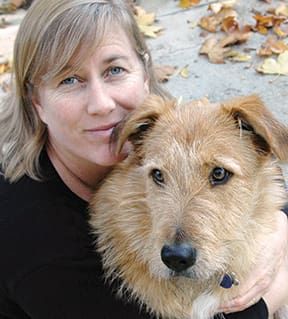The first small dog I ever owned came to me as a hand-me-down. My sister’s husband brought home a long-haired Chihuahua puppy on a whim, but after the initial “new dog” thrill wore off, no one in the family took the time or had any interest in training the tiny dog. Mokie grew up eliminating in the house, chewing anything that interested him, and barking shrilly at everyone who came to the door. If they took him outside, he had to be on a leash, because he would gaily run down (and into) the street any chance he got, and no amount of calling would bring him back until he was exhausted. When I first met him, he was almost a year old and knew nothing. He responded to his name – sometimes – but didn’t know how to perform a single behavior on cue. When I asked what behaviors he knew, my sister responded with a tone that indicated I was being ridiculous for asking. “Oh right,” she said. “Like you can even train a dog that small.”

288
Well, gosh, of course you can! If you can train chickens to play the piano and goldfish to dunk tiny basketballs through tiny underwater basketball hoops – and you can, just do a search on YouTube and you’ll see proof – of course you can train a Chihuahua to sit and come to you on cue!
I spent my three-day visit with my sister training Mokie to sit, lie down, and come to me on cue, and showing everyone in the family how to support that trainingo. He was whip-smart and learned fast. But he needed time with and attention from people, and no one stepped up. It wasn’t long before my sister asked me if I could help her re-home Mokie.
Within a month of arriving at my house, he was reliably trained to do almost everything any dog should know to do: come, sit, down, off, get in your crate. (Achieving a reliable “Shush!” has been a lifelong project, however.) He was so cute and fun that we kept delaying the search for a new family for him. (Years later, after dog-sitting him for a week while I moved, my other sister fell in love with him and begged to keep him. He bonded so well to her and her husband and their two other small dogs, that I let him stay there. Mokie is now a portly 12-year-old and the best-trained dog she has (though still a bit barky!)
I’m a huge fan of force-free training for all dogs, and even though it’s grammatically incorrect to say so, positive techniques are even more perfect for training small and tiny dogs. They are every bit as smart (some would say smarter) than bigger dogs, and often very motivated to “work for food.” In my experience, the only thing about training little dogs that is more difficult than training larger ones is the speed – they often move so fast that it can be difficult at first to mark and reward their good behavior quickly enough that they understand which behavior has earned the reward.
In the article on the facing page, Training Editor Pat Miller has a lot of tips for training the tiny dog. I hope you’ll give them a try.






